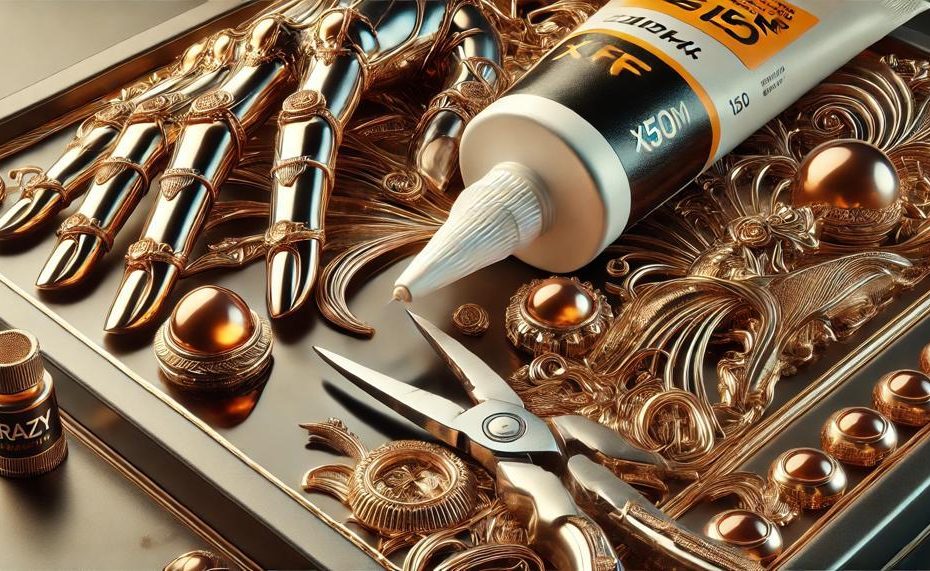Reaching for that Krazy Glue to seal a cut may seem tempting, but is it really a safe solution? The answer is a resounding no – using household glues like Krazy Glue on cuts can lead to serious consequences and should be avoided at all costs. Here’s why:
- Household glues contain harsh chemicals that can cause severe skin irritation, rashes, and even chemical burns when applied to open wounds.
- These glues are not designed for use on the human body and can introduce harmful toxins into the bloodstream if absorbed through cuts.
- They can also trap bacteria and moisture within the wound, increasing the risk of infection and hindering proper healing.
Instead of risking your health with dangerous DIY remedies, it’s crucial to treat cuts properly using medical-grade adhesives specifically formulated for wound care. These products are sterile, non-toxic, and designed to seal small, clean cuts while allowing them to breathe and heal naturally.
Don’t gamble with your well-being – reach for the right tools when dealing with cuts and injuries.
Table of Contents
What Super Glue Is Safe for Skin?
| Safe for Skin | Not Safe for Skin | Precautions |
|
|
|
Medical-grade cyanoacrylate adhesives, specifically designed for wound closure, are the safest option for sealing minor cuts and scrapes on the skin. These adhesives create a waterproof, antimicrobial barrier that protects the wound while it heals.
Household super glues, however, are not meant for skin contact and can cause adverse reactions. If a medical-grade adhesive is unavailable, household glue can be used as a temporary measure, but proper wound cleaning and precautions are crucial. Ultimately, seeking professional medical attention is recommended for deep, jagged, or infected wounds.
Advantages of Glue
| Advantages of Using Glue on Cuts and Wounds | Description | |
| Versatility | Surgical glue, also known as tissue adhesive or liquid stitches, can be used to close a wide range of wounds, from minor lacerations to incisions made during laparoscopic surgery. It is particularly useful for wounds on delicate areas like the face or groin. | |
| Convenience | Applying glue is generally faster and less invasive than traditional suturing, making it a more convenient option for both patients and medical professionals. | |
| Aesthetics | Surgical glue can result in a neater, less visible scar compared to sutures, which is especially beneficial for wounds on exposed areas like the face. | |
| Reduced Risk of Infection | Since glue creates a waterproof barrier over the wound, it can help prevent infection by keeping out bacteria and other contaminants. | |
| Flexibility | Unlike sutures, which can cause tension and restrict movement, glue allows for more flexibility and natural movement of the area around the wound. | |
While surgical glue offers several advantages, it may not be suitable for everyone. Those with an increased risk of slow wound healing, such as individuals with diabetes or other health conditions, may not be good candidates for this method.
Additionally, some people may have allergic reactions to the adhesive. Always consult with a medical professional to determine the best wound closure option for your specific situation.
When to Use Glue on Cuts
| Using glue, also known as tissue adhesive or liquid stitches, on cuts may be appropriate in the following situations: | Instead of traditional bandages: | Instead of traditional stitches: |
| – For minor cuts, lacerations, or incisions that are not too deep or gaping | – For minor cuts that do not require extensive wound closure | – For lacerations or incisions on the face or groin area, where scarring is a concern |
| – When a waterproof barrier is needed to protect the wound | – For cuts that are not bleeding heavily and can be easily approximated | – For laparoscopic surgery incisions, where the glue can provide a secure closure without visible scarring |
It’s crucial to consult with a medical professional, as the application of surgical glue requires precise technique and consideration of factors like wound location, depth, and potential for infection. Glue may not be suitable for larger, deeper, or heavily contaminated wounds.
When Not to Use Glue
Here are some potential risks and dangers of using Krazy Glue (cyanoacrylate adhesive) on cuts or open wounds:
| Risk/Danger | Description |
|---|---|
| Allergic Reactions | Cyanoacrylate can cause allergic reactions like redness, itching, rash, or swelling in some individuals. |
| Delayed Healing | The glue can trap moisture and bacteria, delaying the healing process of the wound. |
| Infection | If the wound is not properly cleaned before application, the glue can seal in bacteria, leading to infection. |
| Skin Irritation | The fumes from cyanoacrylate can irritate the skin, eyes, and respiratory system. |
| Chemical Burns | Prolonged exposure or misuse of the glue can cause chemical burns on the skin. |
| Scarring | Improper application or removal of the glue can lead to scarring or skin damage. |
It’s crucial to avoid using Krazy Glue on deep cuts, puncture wounds, or heavily bleeding injuries. The glue is not sterile and can trap bacteria, increasing the risk of infection. For serious wounds, seek proper medical attention and use sterile adhesive strips or sutures as recommended by healthcare professionals.
How to Use It
Using Krazy Glue or any household glue on cuts is not recommended and should only be done as a temporary measure if no medical-grade adhesive is available. Here are the proper steps to follow for safety and effectiveness:
Clean the Cut
Thoroughly wash the cut with soap and water, removing any dirt, debris, or particles.
Stop the Bleeding
Apply pressure with a clean cloth or bandage until the bleeding stops completely.
Dry the Cut
Ensure the cut and surrounding area are completely dry before applying the glue.
Apply Glue Sparingly
Use a minimal amount of glue, just enough to seal the edges of the cut together.
Hold the Edges Together
Gently hold the edges of the cut together for 1-2 minutes until the glue sets.
Conclusion
Sealing a cut with Krazy Glue may seem like a quick fix, but it’s a dangerous gamble with your health. These household adhesives contain harsh chemicals that can severely irritate open wounds, cause rashes or burns, and even introduce toxins into your bloodstream. They trap moisture and bacteria, hindering proper healing and increasing infection risks. Don’t let the tempting convenience lure you into this risky DIY remedy.
The right solution is using medical-grade adhesives specifically designed for wound care. Products like Dermabond create a sterile, breathable barrier that protects minor cuts while allowing them to heal naturally. For deeper or contaminated injuries, adhesives are no substitute for proper cleaning and medical treatment. Reach for the right tools – use glues meant for skin, follow application precautions carefully, and seek professional care when needed.
Your wellbeing is too precious to jeopardize with ill-advised quick fixes. A little patience and the proper wound care products can make all the difference in avoiding complications. Don’t let that alluring tube of Krazy Glue tempt you into a regrettable and potentially harmful situation.






